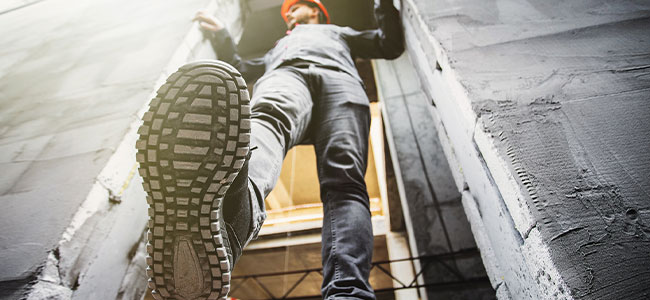
Put Your Best Footwear Forward
Stepping up safety for specific environmental, application and exposure risks.
- By Nick Larkins
- Mar 01, 2024
For centuries, workers have sought out the right tool for the job, carrying a tool bag full of different wrenches, screwdrivers, and plyers, yet some still wear the same pair of work boots for every type of environment, application, and exposure. It’s time to empower America’s workforce to get the job done safely by stepping up to offer the right boots for the job to be done every time.
Through my company’s partnership with the Elite Trades Championship Series, we have engaged with the best auto-tech, electrical, HVAC and plumbing tradespeople in the country. We have seen firsthand the varied conditions that America’s tradespeople face throughout their day.
A quick survey of tradespeople with varied working conditions revealed that they carry an average of three pairs of work boots for the various tasks they perform regularly. Just like each bolt has its corresponding wrench, and each job has its corresponding tools, using fit-for-purpose protective footwear ensures proper foot protection for the job at hand. Do your workers have access to the full assortment of protective footwear options needed for the work they perform?
Matching Footwear to the Task at Hand
When the type of work performed or the job site conditions vary, typical leather work boots alone may not be enough to handle the task at hand. Having the right tool for the job is key to maximizing efficiency and effectiveness on the job: For the HVAC workers pouring concrete slabs for compressors; for the plumbing professionals working on emergency leaks; or for electrical workers installing a new electrical panel in less-than-ideal weather conditions that leather work boots are not equipped to handle. Not to worry, PPE manufacturers have fit-for-purpose solutions to keep you safe, comfortable and dry until the job is done.
What is foot protection? Foot protection can generally be defined as any piece of personal protective equipment protecting one’s foot from injury while at work or during movement. Protective footwear is designed to mitigate risks from rolling objects, falling objects, kicking, crushing hazards, objects piercing the sole, as well as exposures to electrical, chemical or flash fire hazards.
Proper protective footwear is the most important factor in reducing the potential for foot-related accidents and injury that may result from environmental, application, or exposure risks and acts as the critical control point for these hazards when they cannot be effectively reduced or eliminated with equipment or processes. Remember, in many organizations, 100 percent of the workforce will be on their feet at some point during their working day, making foot protection a high exposure risk for most, if not all, of your workers.
This article originally appeared in the February/March 2024 issue of Occupational Health & Safety.